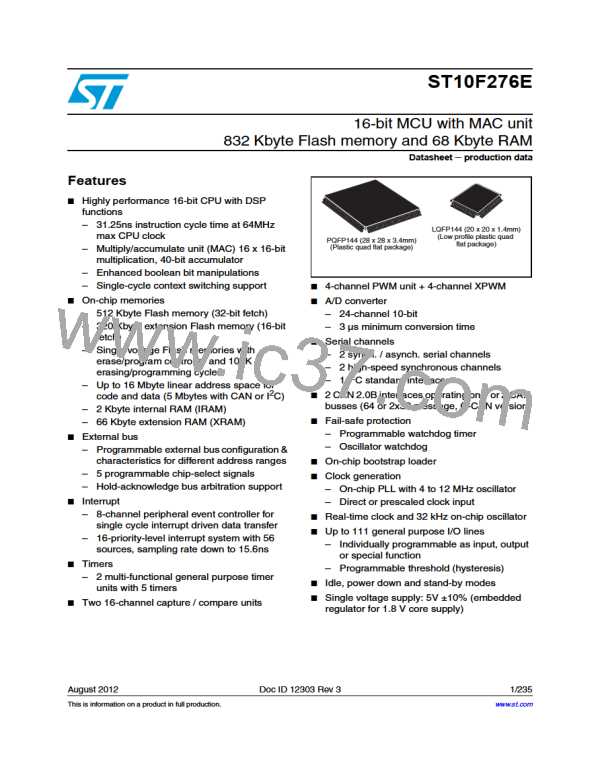Bootstrap loader
ST10F276E
Figure 10. Baud rate deviation between host and ST10F276E
)
&
"
ꢁꢌꢃꢕ
"
"
"
(/34
,OW
(IGH
))
'!0'2)ꢉꢉꢈꢁꢄ
The minimum baud rate (BLow in Figure 10) is determined by the maximum count capacity
of timer T6, when measuring the zero byte, that is, it depends on the CPU clock. Using the
maximum T6 count 216 in the formula the minimum baud rate is calculated. The lowest
standard baud rate in this case would be 1200 baud. Baud rates below BLow would cause
T6 to overflow. In this case, ASC0 cannot be initialized properly.
The maximum baud rate (BHigh in Figure 10) is the highest baud rate where the deviation
still does not exceed the limit, that is, all baud rates between BLow and BHigh are below the
deviation limit. The maximum standard baud rate that fulfills this requirement is 19200 baud.
Higher baud rates, however, may be used as long as the actual deviation does not exceed
the limit. A certain baud rate (marked “I” in Figure 10) may, for example, violate the deviation
limit, while an even higher baud rate (marked “II” in Figure 10) stays well below it. This
depends on the host interface.
5.4
Standard bootstrap with CAN
5.4.1
Features
The bootstrap via CAN has the same overall behavior as the bootstrap via UART:
●
Same bootstrapping steps;
●
Same bootstrap method: Analyze the timing of a predefined frame, send back an
acknowledge frame BUT only on request, load a fixed number of bytes and run;
●
Same functionalities: Boot with different crystals and PLL ratios.
58/235
Doc ID 12303 Rev 3

 STMICROELECTRONICS [ ST ]
STMICROELECTRONICS [ ST ]